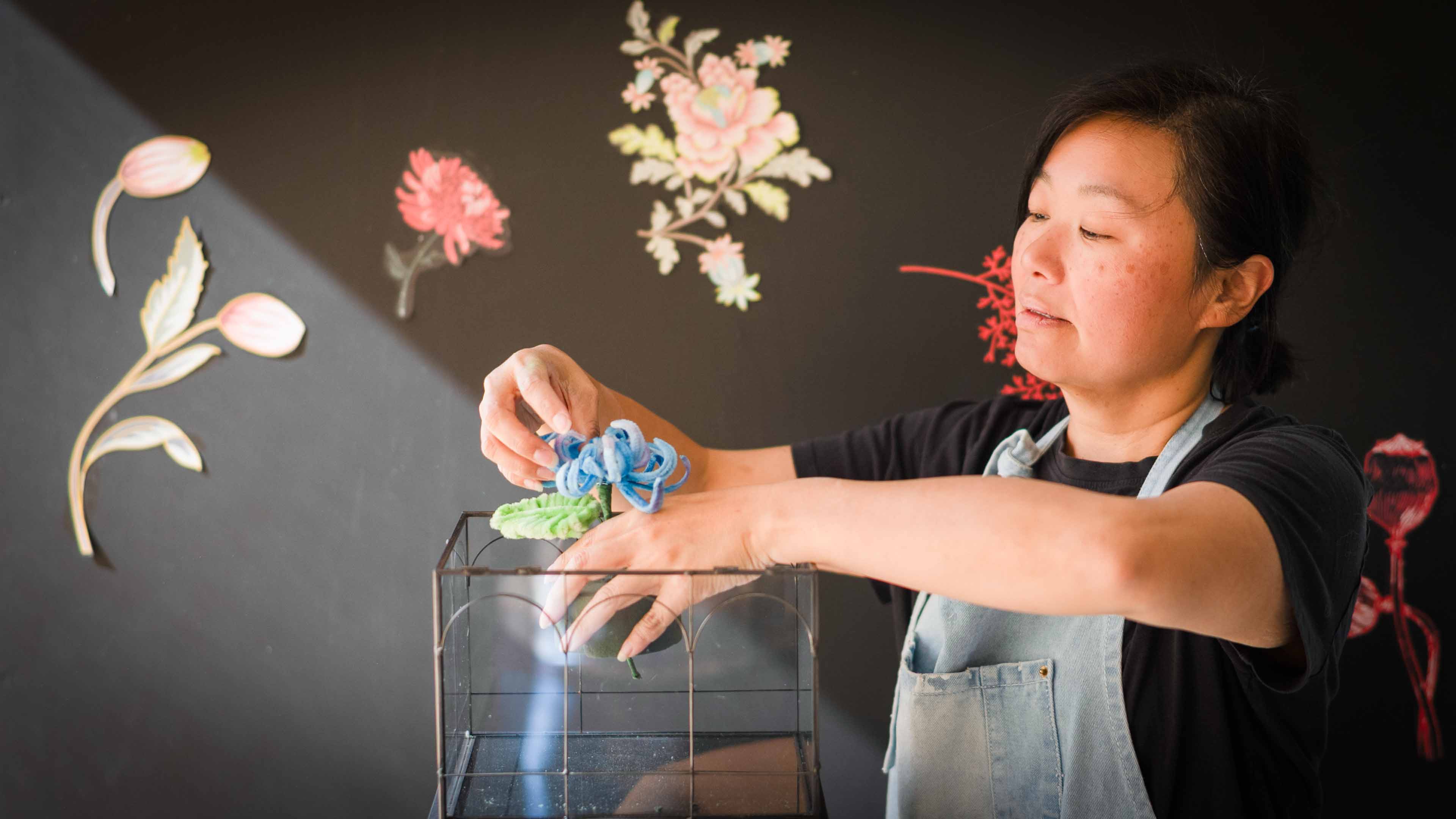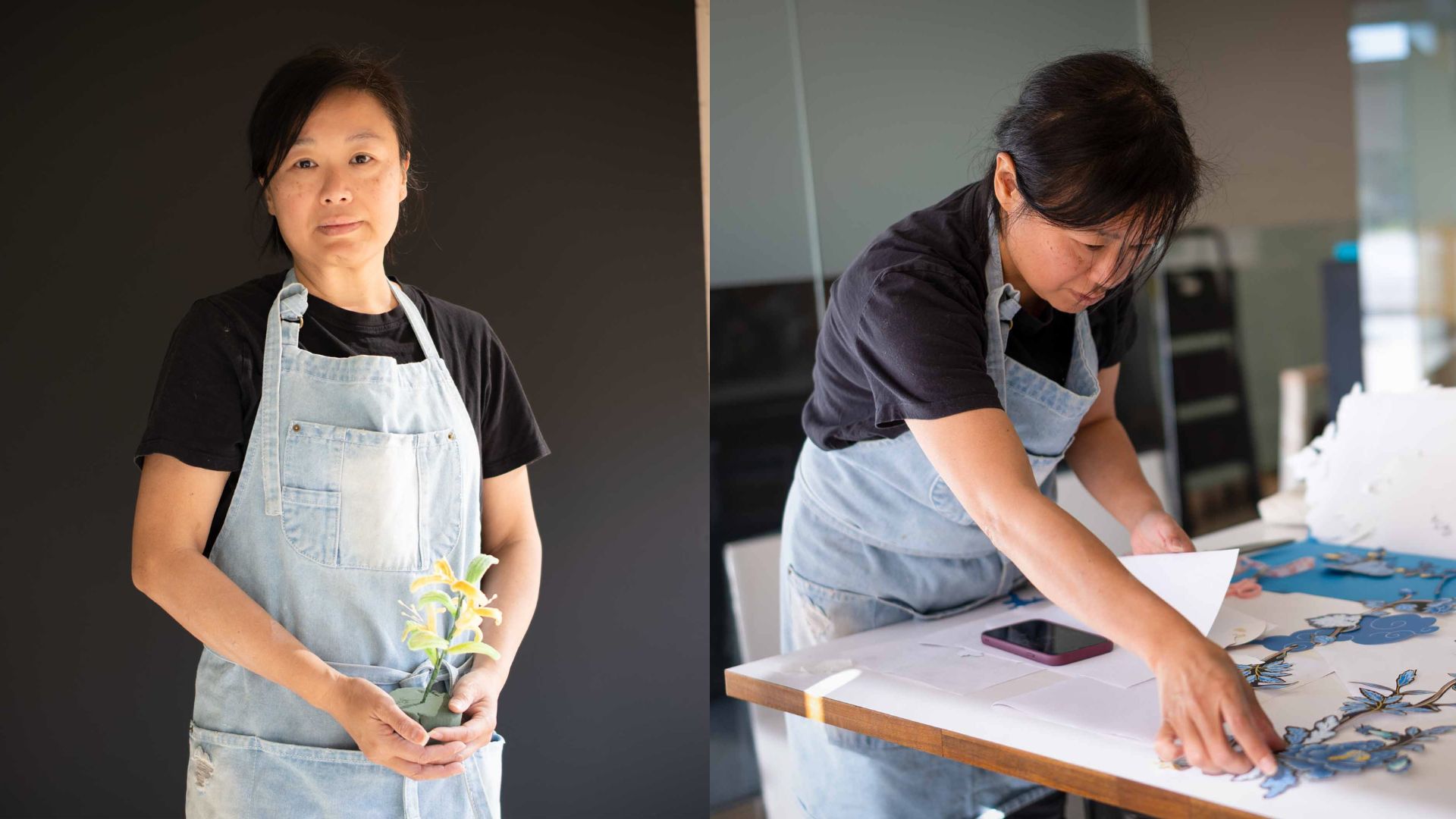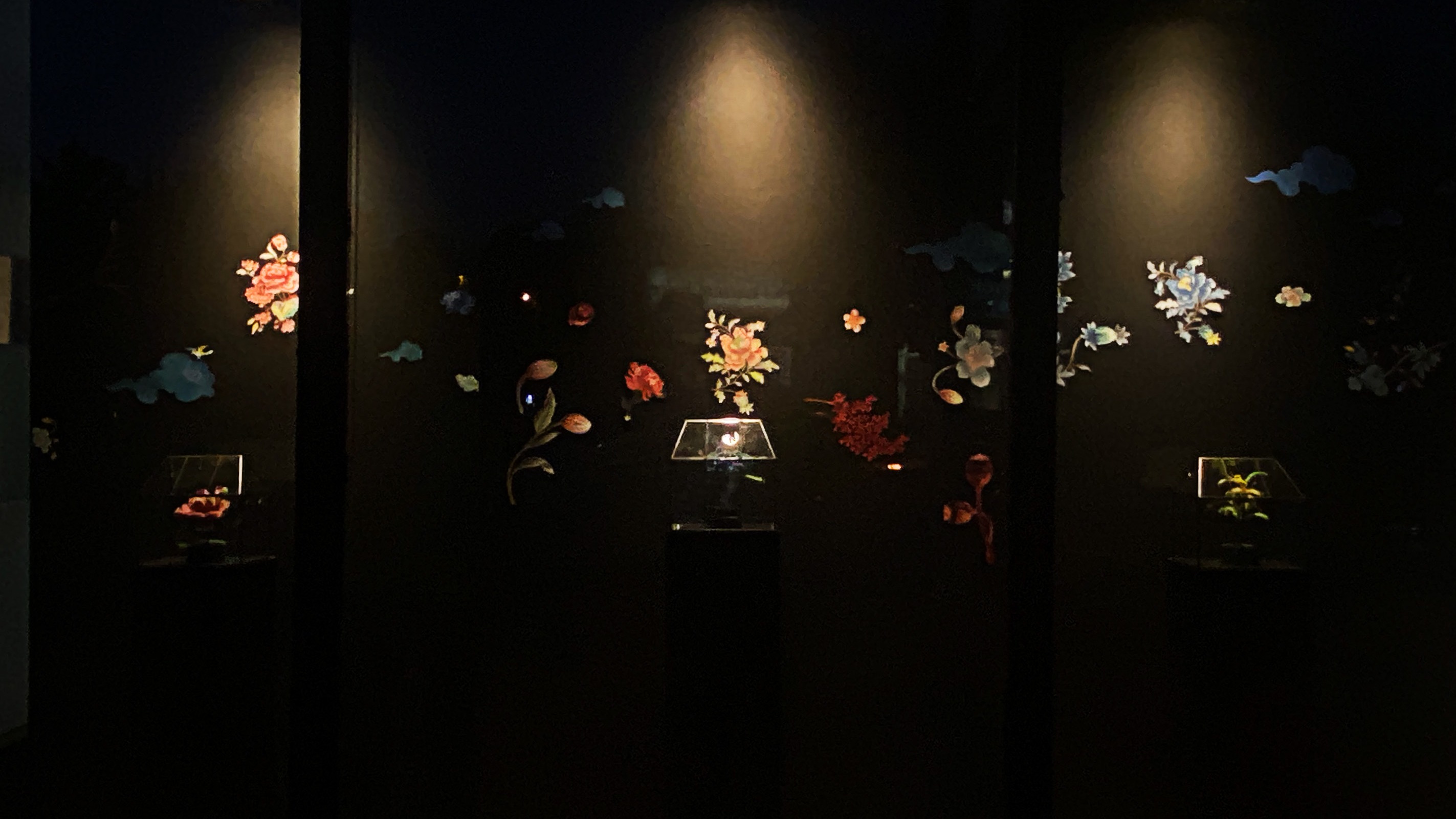Chan-Dow’s artwork “Re-membering” was featured in Toronto’s Nuit Blanche 2025

Elaine Chan-Dow is using her art to tell stories that matter – including one story that mirrors the themes of her PhD research and serves as a commentary on culture, imperialism, a lost art form called ronghua, and environmental sustainability.
The University of Guelph-Humber (U of GH) Media & Communication Studies instructor created a piece called “Re-membering” as part of a larger art exhibit called the “Danforth Translated.” This was displayed at Nuit Blanche 2025, an annual art event that takes place across Toronto from sunset to sunrise.
“I was very honoured that they selected me as one of the artists to participate [in Nuit Blanche],” Chan-Dow said. “For me, it's important to be a practising artist because I can always bring fresh ideas into the classroom and inspire students… What I teach is in the realm of art; I need to be immersed in art.”

The artwork represents the history of British imperialism in the 1800s and 1900s in China. The British originally sent people to China to extract tea to bring back home for propagation and profit, but they also began to illegally extract native flowers – chrysanthemums, peonies, and honeysuckle. Chan-Dow explains there were many expeditions because the flowers died on the ships back to Britain, until they used the Wardian case to transport the plants.
“There’s this whole idea about imperialism, botanical extractions, but overall, I use it as a metaphor to talk about migration, to talk about culture, diaspora, the movement of migration and movement of humans, especially now,” she said.
Paying homage to Chinese culture was important to Chan-Dow, down to the method she used to create the piece. She crafted the flowers in her art piece (the chrysanthemums, peonies, and honeysuckle) using the ancient “ronghua” technique, also known as the “velvet flower.” This involves wrapping loose strands of string around a wire, which Chan-Dow described as looking like a pipe cleaner. This technique took her around three months of trial and error to master, and during this process, she also connected with an artist in China who is trying to revive the art form.
.jpg-1762354041)
Ronghua has roots in ancient culture as an indication of status, as women wore ronghua hairpins, with the finer ones reserved for the wealthy. It’s a dying art, she said, and a technique that isn’t quite honoured in the same way in modern times.
Moreover, part of her exhibit included a QR code that patrons could scan to hear a poem read by Chan-Dow, referencing the flowers.
Seeing Nuit Blanche participants take in the entirety of the exhibit was meaningful for Chan-Dow. She lingered for the first couple of hours of Nuit Blanche to meet visitors and answer questions about the artwork – something she described as “intimate and personal,” and “an incredible experience.”
“The art affects the way I teach and inspires the way I teach, and my teaching inspires my work. It’s very circular,” Chan-Dow said.
If you’re interested in storytelling and connecting with the world around you, learn more about the Media & Communication Studies program by clicking here.
Visit our campus to learn more about the program during our Fall Open House on November 22, 2025. Learn more.


